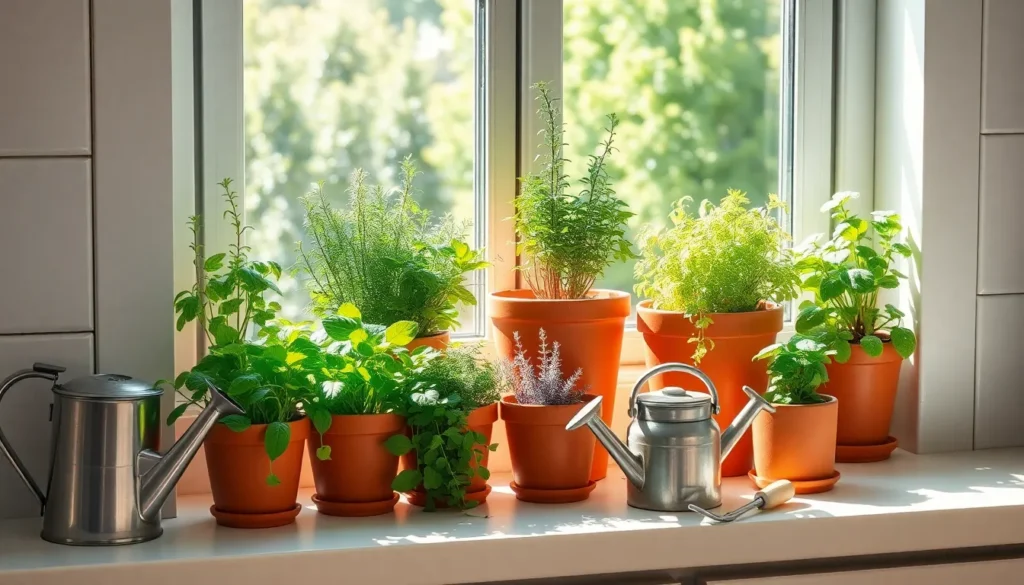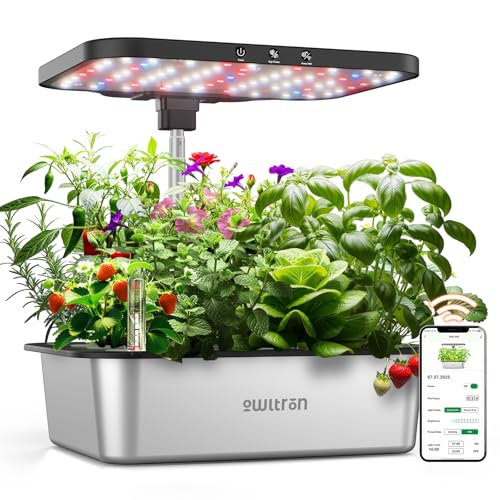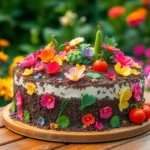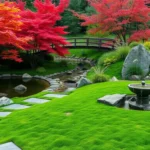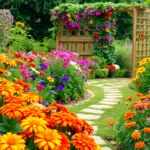Growing fresh herbs at home has never been easier or more rewarding than it is today. We’ve discovered that creating an indoor herb garden transforms not only our cooking but our entire living space into a fragrant oasis of fresh flavors and natural beauty.
Whether you’re working with a sunny windowsill or a dark corner that needs some creative lighting answers we’ll show you exactly how to turn any indoor space into a thriving herb sanctuary. From compact countertop gardens perfect for studio apartments to elaborate vertical growing systems that make a stunning statement we’ve gathered the most effective ideas that actually work.
The best part? You don’t need a green thumb or expensive equipment to get started. We’ll walk you through simple setups that guarantee fresh basil oregano and rosemary year-round plus some surprising herb varieties that thrive indoors better than outdoors. Let’s jump into these game-changing indoor herb garden ideas that’ll have you wondering why you waited so long to start growing your own fresh herbs.
Choose the Perfect Location for Your Indoor Herb Garden
Finding the right spot for your indoor herb garden determines whether your herbs will thrive or struggle to survive. We’ll explore the key factors that make certain locations ideal for growing fresh herbs indoors.
Assess Natural Light Availability
South-facing windows provide the most intense sunlight throughout the day, making them perfect for sun-loving herbs like basil, oregano, and rosemary. These herbs need 6-8 hours of direct sunlight daily to produce their flavorful oils and maintain healthy growth.
East-facing windows offer gentle morning light that works well for delicate herbs such as cilantro, parsley, and chives. The cooler morning sun prevents these tender plants from becoming stressed or bolting too quickly.
West-facing windows deliver afternoon sun that can become quite intense during summer months. We recommend using these spots for Mediterranean herbs like thyme, sage, and lavender that tolerate stronger light conditions.
North-facing windows receive the least natural light but still work for shade-tolerant herbs including mint, lemon balm, and some varieties of lettuce. Consider supplementing with grow lights if your herbs appear leggy or pale.
Consider Temperature and Humidity Levels
Maintain consistent temperatures between 65-75°F for optimal herb growth throughout your indoor garden. Most culinary herbs prefer this moderate range and will show stress signs like wilting or dropping leaves when temperatures fluctuate dramatically.
Avoid placing herbs near heating vents or air conditioning units that create sudden temperature changes and dry air currents. These locations can cause rapid moisture loss and shock your plants’ root systems.
Monitor humidity levels around 40-50% to prevent common problems like powdery mildew or spider mites. Kitchens and bathrooms naturally provide higher humidity, but you can increase moisture by grouping plants together or using humidity trays.
Keep herbs away from drafty areas such as frequently opened doors or windows during cold months. Cold drafts can damage tender new growth and slow overall plant development significantly.
Evaluate Space Constraints and Accessibility
Measure your available growing space before selecting containers and herb varieties to ensure proper plant spacing. Overcrowded herbs compete for light and nutrients, leading to weak growth and increased disease susceptibility.
Choose locations within easy reach for daily watering, harvesting, and maintenance tasks. We find that herbs placed too high or in awkward corners often get neglected, resulting in poor plant health.
Consider vertical growing options like wall-mounted planters or tiered plant stands when floor space is limited. These answers maximize your growing area while keeping herbs accessible for regular care.
Plan for adequate air circulation around your herb garden to prevent fungal issues and promote strong stem development. Leave at least 2-3 inches between containers and avoid placing them against walls where air movement is restricted.
Select the Right Containers for Your Herbs
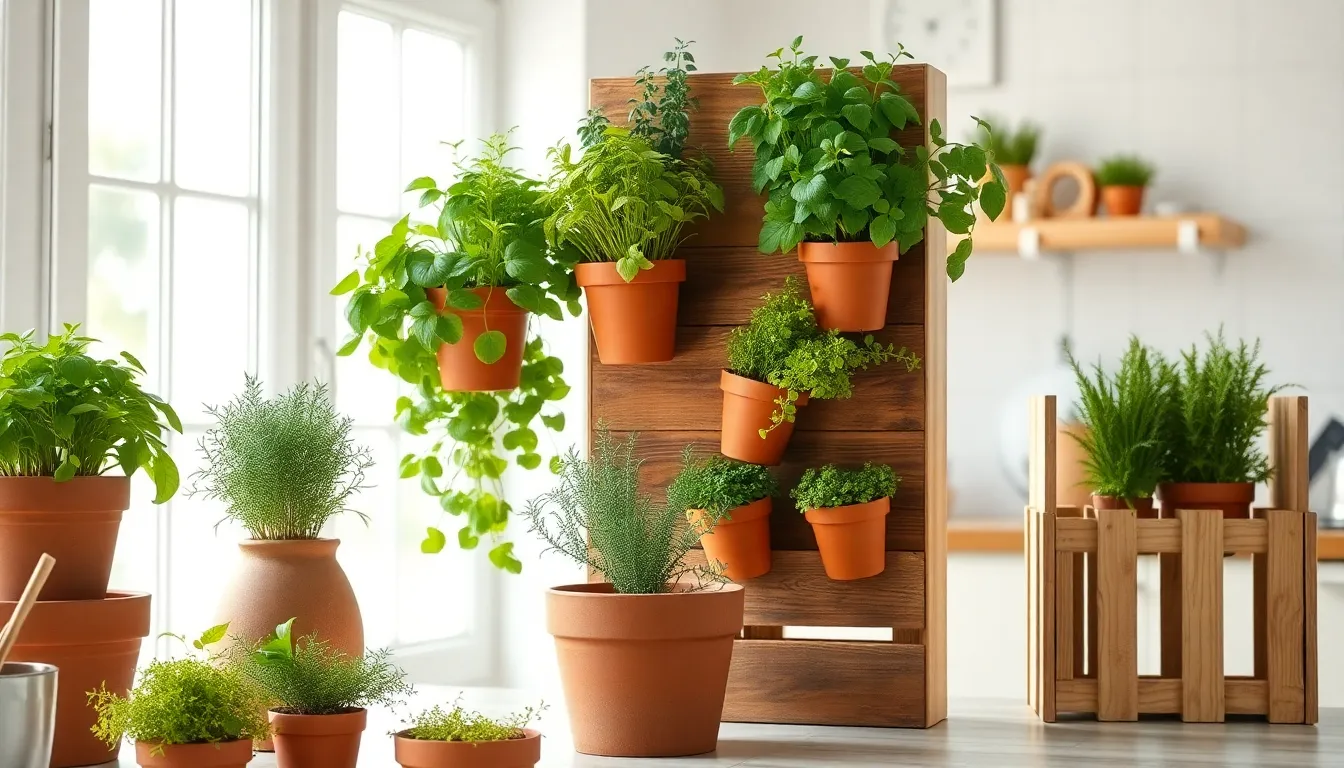
Choosing the right containers is crucial for your indoor herb garden’s success. We’ll explore various container options that provide optimal growing conditions while fitting seamlessly into your home’s aesthetic.
Traditional Pots and Planters
Traditional pots remain our top choice for most indoor herb gardens due to their proven effectiveness and reliability. Cedar, steel, and terra cotta clay materials work exceptionally well because they naturally regulate moisture levels and provide proper root aeration. We recommend selecting containers that are specifically “food-grade” and “untreated” to ensure your organic herbs remain pure and safe for consumption.
Terra cotta pots offer excellent drainage capabilities while staying budget-friendly for herb gardeners. Depth matters significantly when choosing traditional planters, so we suggest containers at least 6 inches deep for shallow-rooted herbs like basil and oregano. Drainage holes prevent overwatering issues that commonly plague indoor herb gardens, making them essential features in any container selection.
Size considerations become important as your herb collection grows, allowing roots adequate space for healthy development. We find that grouping multiple traditional pots creates an attractive herb display while maintaining individual plant care requirements.
Vertical Growing Systems
Vertical growing systems maximize our available space while creating stunning living walls in any indoor setting. Wall-mounted planters transform unused vertical surfaces into productive growing areas that don’t compete for floor space. These systems work particularly well for herbs like mint and basil that naturally grow upwards and spread outward.
Trellis systems provide climbing support for vining herbs while adding architectural interest to your indoor garden. We recommend installing these systems near windows where herbs receive adequate natural light throughout the day. Multiple tier arrangements allow us to grow various herb varieties at different heights, creating efficient growing zones within limited square footage.
Space efficiency improves dramatically with vertical systems, especially in apartments or smaller homes where every inch counts. Maintenance becomes easier when herbs are positioned at eye level, making daily care and harvesting more convenient.
Repurposed Household Items
Repurposed household items offer creative and cost-effective answers for unique indoor herb gardens. Old wooden crates and pallets convert easily into rustic herb planters that add character to any space. We’ve successfully transformed discarded chairs and tables into conversation-piece herb gardens that serve dual purposes as furniture and growing systems.
Wooden boxes provide excellent drainage when properly prepared, while metal containers add industrial charm to modern kitchen designs. Creative repurposing reduces waste while creating personalized herb garden answers that reflect individual style preferences. We suggest ensuring all repurposed containers have adequate drainage and are safe for food production before planting.
Budget-conscious gardeners benefit significantly from repurposing items they already own, making herb gardening accessible to everyone. Creativity flourishes when we think beyond traditional containers, resulting in unique herb gardens that become focal points in our homes.
Pick the Best Herbs for Indoor Growing
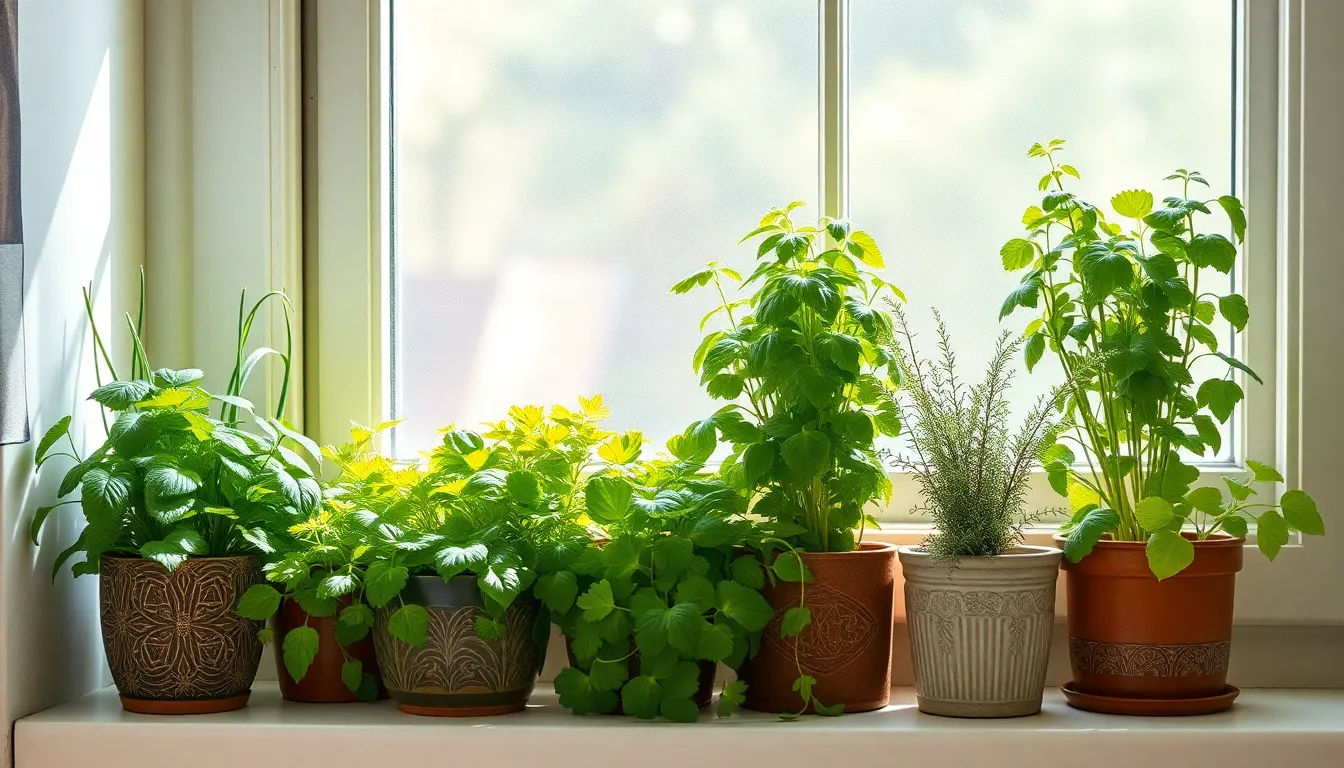
Now that we’ve selected our containers and location, we need to choose herbs that’ll actually thrive in our indoor environment. Different herbs have varying requirements and success rates when grown indoors.
Easy-to-Grow Beginner Herbs
Mint tops our list for new indoor gardeners because it’s incredibly hardy and forgiving. This resilient herb tolerates lower light conditions and requires minimal maintenance, making it perfect for anyone just starting their indoor growing journey.
Chives offer another excellent beginner option since they adapt well to indoor conditions and produce continuously throughout the growing season. We love how they tolerate cooler temperatures and don’t mind if we forget to water them occasionally.
Parsley rounds out our beginner trio with its ability to thrive in various light conditions and its tolerance for common indoor growing mistakes. Both flat-leaf and curly varieties grow successfully indoors, giving us flexibility in our herb selection.
Culinary Herbs for Cooking Enthusiasts
Basil deserves a spot in every cooking enthusiast’s indoor garden because it’s used in countless recipes and provides fresh flavor year-round. Sweet basil, Thai basil, and purple basil all grow well indoors with proper care and adequate light.
Thyme brings Mediterranean flavors to our indoor gardens and works beautifully in soups, roasts, and marinades. English thyme and lemon thyme varieties both adapt well to container growing and don’t require extensive space.
Oregano completes our culinary essentials with its robust flavor that enhances pizza sauces, pasta dishes, and Greek cuisine. We find that oregano actually develops more intense flavors when grown in the controlled environment of our indoor gardens.
Rosemary requires slightly more attention due to its preference for high humidity, but the fresh piney fragrance and culinary versatility make it worth the extra effort.
Medicinal and Aromatic Herbs
Lemon balm provides both aromatic benefits and calming properties that make it valuable for relaxation teas and natural stress relief. This member of the mint family grows easily indoors and releases a wonderful citrusy scent when we brush against its leaves.
Marjoram offers gentle medicinal benefits with its calming effects on both mind and body. We appreciate how this herb adds a unique floral element to our indoor gardens while providing therapeutic value for evening teas and aromatherapy uses.
These medicinal herbs give our indoor gardens purpose beyond cooking, creating spaces that nurture both our bodies and our well-being through natural plant medicine.
Create a Hydroponic Herb Garden System
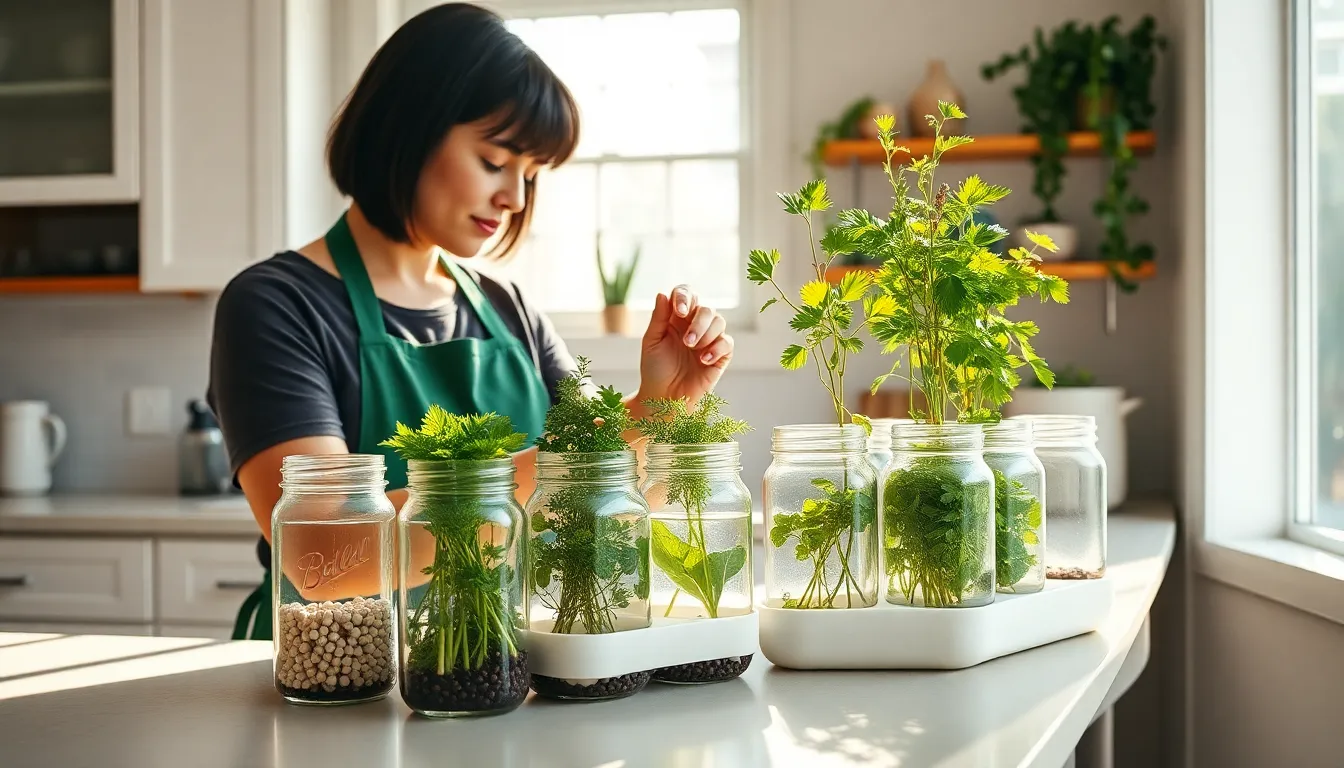
Growing herbs without soil transforms your indoor gardening experience and delivers remarkable results. We’ll explore how hydroponic systems use nutrient-rich water instead of traditional soil to create thriving herb gardens.
Benefits of Soilless Growing
Hydroponic growing accelerates plant growth significantly compared to traditional soil methods. Plants receive precise nutrition through controlled nutrient answers, resulting in faster development and higher yields throughout the growing season.
Water efficiency improves dramatically with soilless systems since plants access exactly what they need without waste. Traditional soil gardening often loses water through drainage and evaporation, while hydroponics recirculates nutrients and moisture effectively.
Pest and disease risks decrease substantially when we eliminate soil from our growing environment. Soil-borne pathogens and insects can’t establish themselves in clean hydroponic systems, reducing the need for pesticides and treatments.
Nutritional control becomes precise and measurable in hydroponic setups. We can adjust nutrient concentrations based on exact plant needs and growth stages, optimizing herb flavor and potency.
Simple DIY Hydroponic Setups
Kratky Method offers the most beginner-friendly approach to soilless herb growing. Place herb seedlings in net cups filled with hydroton pellets, then partially submerge roots in nutrient solution for passive aeration and growth.
Windowsill Gardens transform sunny spots into productive herb stations using small containers with nutrient answers. Use clear or dark glass containers, but prevent algae growth by covering clear glass with foil or spray paint to block light exposure.
Mason Jar Systems provide affordable entry points into hydroponic gardening using common household items. Fill mason jars with nutrient solution and hydroton pellets, then wrap jars to block light and prevent algae development.
Advanced setups incorporate smart monitoring technology with sensors for temperature, humidity, and nutrient levels. Raspberry Pi devices can control these systems remotely, collecting data and automating maintenance tasks for optimal growing conditions.
Maintenance and Nutrient Management
Water level monitoring requires weekly attention to ensure roots maintain proper contact with nutrient answers. Check containers regularly and top off with fresh nutrient solution as plants consume water and minerals.
Nutrient concentration should be replenished or completely replaced every 1-2 weeks to maintain optimal plant health. Fresh answers provide essential minerals that herbs need for robust growth and flavor development.
Environmental factor tracking includes temperature and humidity monitoring for consistent growing conditions. Maintain stable temperatures and adequate humidity levels to prevent stress and promote healthy herb development.
Algae prevention involves blocking light from reaching nutrient answers and maintaining clean growing environments. Regular cleaning of containers and replacing nutrient answers prevents algae buildup that competes with herbs for resources.
Design a Living Herb Wall Display
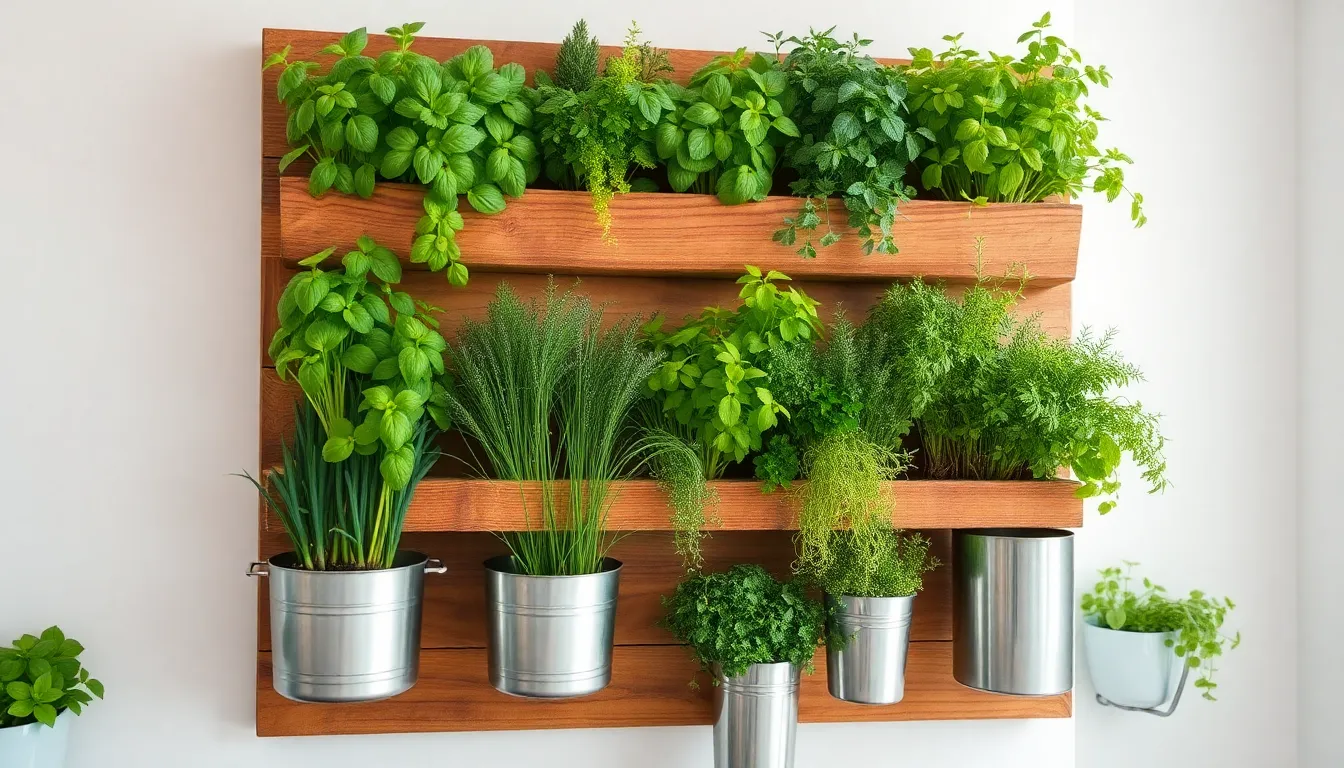
Transforming vertical spaces into thriving herb gardens creates stunning focal points while maximizing growing potential. We’ll explore how to build beautiful living walls that bring fresh herbs within arm’s reach.
Vertical Garden Installation Options
Reclaimed wood planters offer rustic charm while supporting sustainable gardening practices. We recommend cedar or pine boards for their natural resistance to moisture and decay. Building custom wooden boxes allows us to match existing décor while creating perfectly sized growing spaces.
Metal planters deliver sleek modern aesthetics that complement contemporary kitchen designs. Stainless steel and powder coated aluminum options resist corrosion while providing excellent drainage capabilities. These systems often feature modular components that we can arrange in countless configurations.
Module systems provide ultimate flexibility for expanding and customizing herb walls over time. Stackable units let us start small and add sections as our gardening confidence grows. Most modular designs include built in irrigation channels that simplify watering maintenance.
Trellis mounted containers work perfectly for renters who can’t install permanent fixtures. Wire grid systems attach securely to walls without damaging surfaces. We can easily relocate these portable gardens when moving or rearranging spaces.
Plant Selection for Wall Gardens
Basil varieties thrive in vertical growing conditions when positioned in sunny locations. Genovese and Thai basil produce abundant harvests throughout the growing season. These fast growing herbs require consistent moisture and respond well to regular pinching for bushier growth.
Mint species adapt exceptionally well to contained wall gardens where their spreading nature stays controlled. Spearmint and peppermint varieties tolerate varying light conditions while producing fragrant leaves year round. We recommend keeping mint in separate containers to prevent it from overwhelming neighboring plants.
Chives add beautiful purple blooms and mild onion flavor to living herb walls. These hardy perennials require minimal care while providing consistent harvests for months. Their grass like appearance creates lovely textural contrast against broader leafed herbs.
Oregano and thyme establish strong root systems that anchor well in vertical plantings. Mediterranean herbs prefer slightly drier conditions than basil or mint varieties. We find these woody herbs create excellent structural elements in mixed herb wall compositions.
Watering and Care Systems
Drainage management prevents root rot and maintains healthy soil conditions in vertical installations. Every container needs multiple drainage holes positioned at the bottom and sides. We recommend placing drip trays beneath each planter level to protect floors and walls from water damage.
Grow light systems ensure consistent herb production when natural sunlight proves insufficient. LED fixtures provide energy efficient lighting that won’t generate excessive heat near living walls. Most herbs require 6 hours of direct light daily for optimal growth and flavor development.
Drip irrigation networks automate watering schedules while delivering precise moisture amounts to each plant. Timer controlled systems prevent overwatering issues that commonly plague vertical gardens. We can install these systems using simple tubing and adjustable emitters available at garden centers.
Regular pruning schedules encourage bushy growth patterns that create fuller looking herb walls. Weekly harvesting prevents plants from becoming leggy while providing fresh ingredients for cooking. Pinching flower buds redirects plant energy into leaf production for maximum culinary value.
Build a Kitchen Counter Herb Station
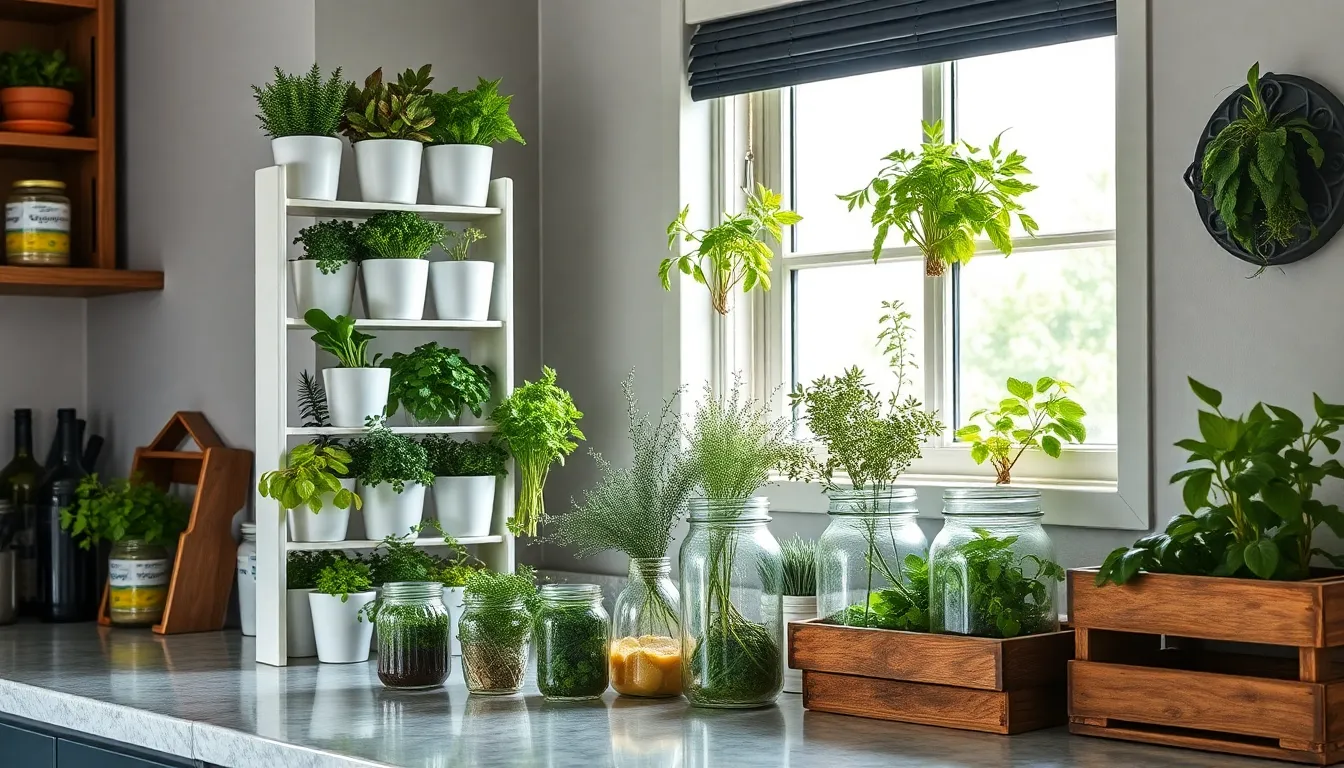
Transforming your kitchen counter into a thriving herb station creates an accessible and visually appealing growing space that enhances your culinary adventures. We’ll explore practical arrangements that maximize limited counter space while keeping fresh herbs within arm’s reach of your cooking area.
Space-Efficient Counter Arrangements
Tiered displays maximize vertical space while maintaining easy access to all your herbs. We recommend arranging plants on multi-level stands or tiered trays that allow each herb to receive adequate light without overcrowding your counter.
Stackable planters create impressive herb towers that use minimal counter footprint. These vertical arrangements work particularly well in small kitchens where every inch of counter space counts.
Self-watering pot systems reduce daily maintenance while ensuring consistent moisture levels for optimal herb growth. We’ve found these containers particularly effective for busy home cooks who want fresh herbs without constant watering schedules.
Corner utilization transforms unused counter corners into productive growing spaces. Arranging herbs in triangular or curved formations makes efficient use of these typically underutilized areas.
Quick-Access Herb Organization
Labeled containers eliminate guesswork when selecting herbs during cooking sessions. We suggest using clear, weatherproof labels that won’t fade or peel in kitchen conditions.
Herb wheels create rotating displays that bring any herb to the front with a simple spin. This circular organization system works exceptionally well for counters with limited depth.
Frequency-based placement positions your most-used herbs like basil and parsley closest to cooking areas. We arrange less frequently used herbs toward the back or sides of the herb station.
Height coordination ensures shorter herbs don’t get overshadowed by taller varieties. Placing compact herbs like thyme in front and larger herbs like rosemary behind maintains visibility and accessibility.
Integration with Kitchen Decor
Repurposed wooden crates add rustic charm while serving as unique planters that complement farmhouse or traditional kitchen styles. We love how these containers bring natural texture to modern kitchen designs.
Color-coordinated planters blend seamlessly with existing kitchen aesthetics by matching cabinet hardware, backsplash tiles, or accent colors already present in your space.
Mason jar displays create charming vintage appeal while providing excellent growing conditions for herbs. These versatile containers work beautifully arranged on floating shelves or grouped on counter surfaces.
Herb-themed accessories reinforce the garden concept through coordinating kitchen tools, towels, or artwork that celebrate your fresh herb collection. We find these decorative touches help tie the entire herb station into your kitchen’s overall design story.
Establish a Window Sill Herb Garden
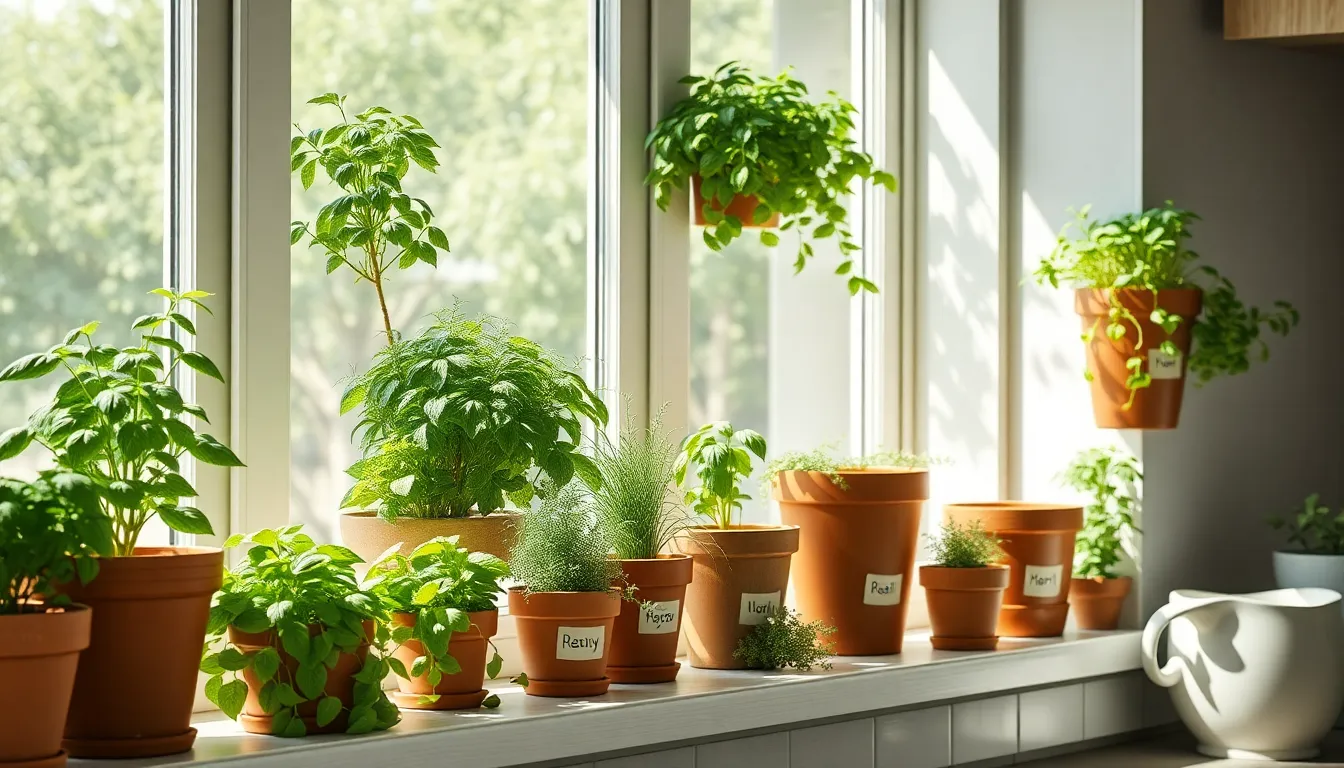
We’ll transform your brightest window into a thriving herb garden that brings fresh flavors within arm’s reach. This setup works perfectly for shallow rooted herbs like basil, mint, rosemary, thyme, oregano, sage, parsley, lavender, marjoram, lemon balm, chives, and lemon verbena.
Maximizing Limited Window Space
Grouping herbs in compact arrangements helps us make the most of every inch on your window sill. Tiered planters create multiple growing levels without taking up additional horizontal space. Stackable containers allow us to grow more varieties vertically when floor space is limited.
Wall mounted containers offer another solution for cramped window areas. Hanging pots from ceiling hooks or window frames free up valuable sill real estate. We recommend selecting pots that match your herbs’ root systems, typically 6 inches deep, to prevent soil from staying overly wet while optimizing available space.
Labeling each plant makes identification and care much easier as your collection grows. Strategic placement ensures every herb receives adequate attention and light exposure.
Seasonal Light Considerations
Herbs need approximately 6 hours of direct or bright indirect sunlight daily to thrive indoors. South facing windows provide the most consistent natural light throughout the day. During winter months or cloudy seasons, we’ll need to supplement with artificial grow lights to maintain healthy growth.
Monitoring your plants regularly helps us spot signs of insufficient light, such as leggy stems or pale leaves. Adjusting plant placement closer to or farther from windows can help optimize light exposure. We should rotate pots weekly to ensure even growth on all sides.
Artificial lighting becomes essential during shorter daylight periods. LED grow lights positioned 6 to 12 inches above plants provide consistent illumination without generating excessive heat.
Container Sizing and Drainage
Choosing containers made from breathable materials like terra cotta, cedar, or food grade untreated steel promotes healthy root development. These natural materials allow air circulation and prevent moisture buildup that can lead to root problems. We’ll ensure each pot is large enough for root growth without being oversized, which can cause waterlogging.
Drainage holes spaced every 3 to 4 inches are essential for preventing root rot and allowing excess water to escape. Placing saucers or plates under pots protects window sills and furniture from water damage. If containers lack drainage holes, we’ll add them using a drill before planting.
| Container Requirements | Specifications |
|---|---|
| Minimum depth | 6 inches |
| Drainage hole spacing | Every 3-4 inches |
| Recommended materials | Terra cotta, cedar, untreated steel |
Selecting herb exact or vegetable potting mix ensures proper nutrition and drainage for optimal growth. Avoiding rocks as drainage substitutes is crucial since they don’t provide the same water management benefits as proper holes.
Set Up Grow Lights for Year-Round Growing
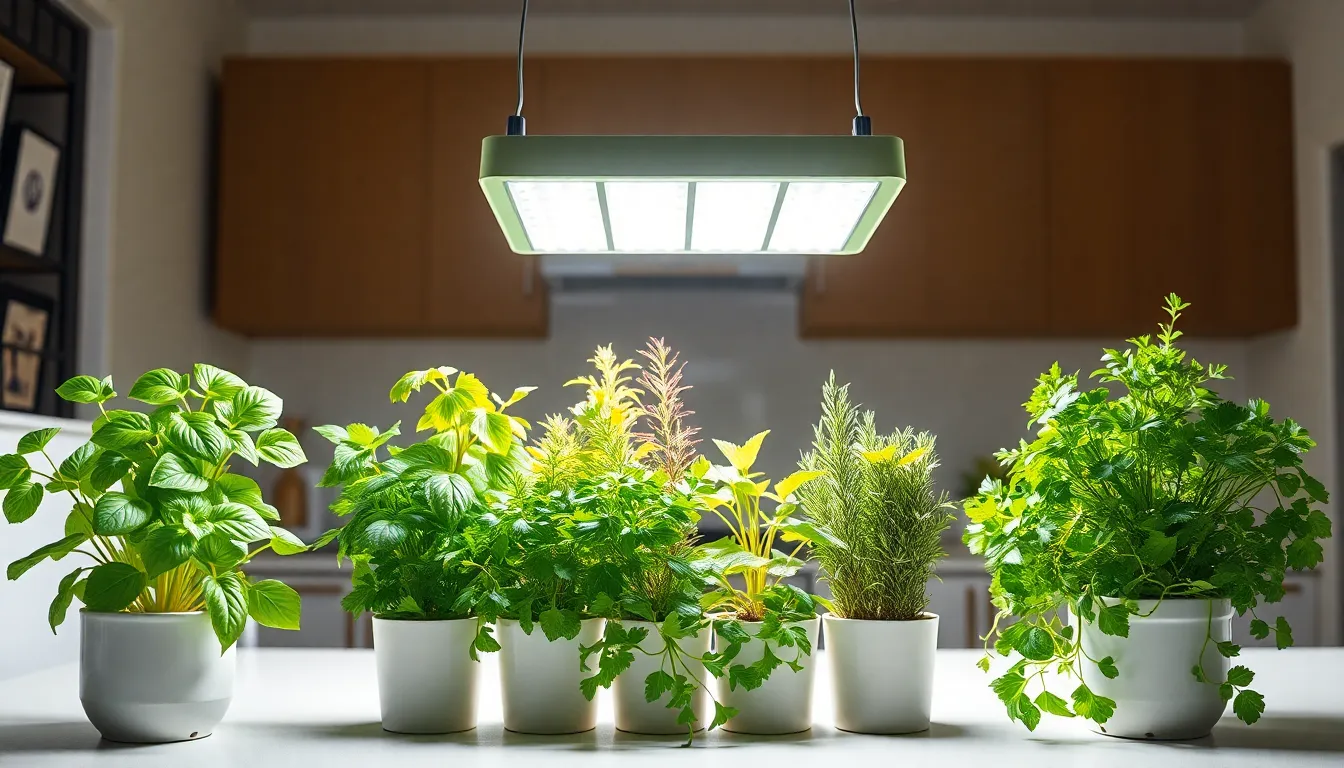
When natural sunlight isn’t adequate for our indoor herb gardens, we need artificial lighting systems to maintain healthy plant growth throughout all seasons. This becomes especially crucial during winter months when daylight hours are shortened and light intensity decreases.
Types of Artificial Lighting Systems
LED grow lights offer the most energy-efficient solution for our indoor herb gardens, providing adjustable light spectrums that can be customized for different growth stages. We can position these lights closer to our plants without generating excessive heat, making them ideal for compact spaces like kitchen counters and windowsills.
Fluorescent lights work well for seedlings and young herb plants, delivering consistent illumination at a lower initial cost than LED systems. These lights are perfect when we’re starting herbs from seeds or maintaining smaller plants like chives and parsley.
HPS (High Pressure Sodium) lights generate intense illumination suitable for larger herb plants like rosemary and basil, though they produce important heat and consume more electricity. We typically reserve these systems for dedicated growing spaces where heat management isn’t a concern.
Light Duration and Intensity Requirements
Most herbs in our indoor gardens require 12 to 14 hours of artificial light daily to thrive and produce the oils that give them their distinctive flavors. Basil and oregano need more intense lighting than mint and chives, so we position high-light herbs closer to our grow lights.
We place lights at varying distances depending on the herb’s exact needs: sun-loving herbs like rosemary perform best 6-12 inches from the light source, while shade-tolerant varieties like parsley can be positioned 12-18 inches away. Monitoring our plants for signs of light stress helps us adjust positioning as needed.
Energy-Efficient LED Options
LED grow panels provide concentrated light coverage for our herb gardens while maintaining slim profiles that fit easily above countertop gardens and vertical growing systems. These panels can be mounted under cabinets or attached to adjustable stands for maximum flexibility.
LED grow strips offer versatile lighting answers that we can install under shelving units or wrap around plant arrangements for even light distribution. Their flexible design makes them perfect for our custom herb garden setups and unconventional growing spaces.
Smart LED systems with built-in timers and spectrum controls allow us to automate our herb garden lighting schedule, ensuring consistent care even when we’re away from home.
Maintain Your Indoor Herb Garden Successfully
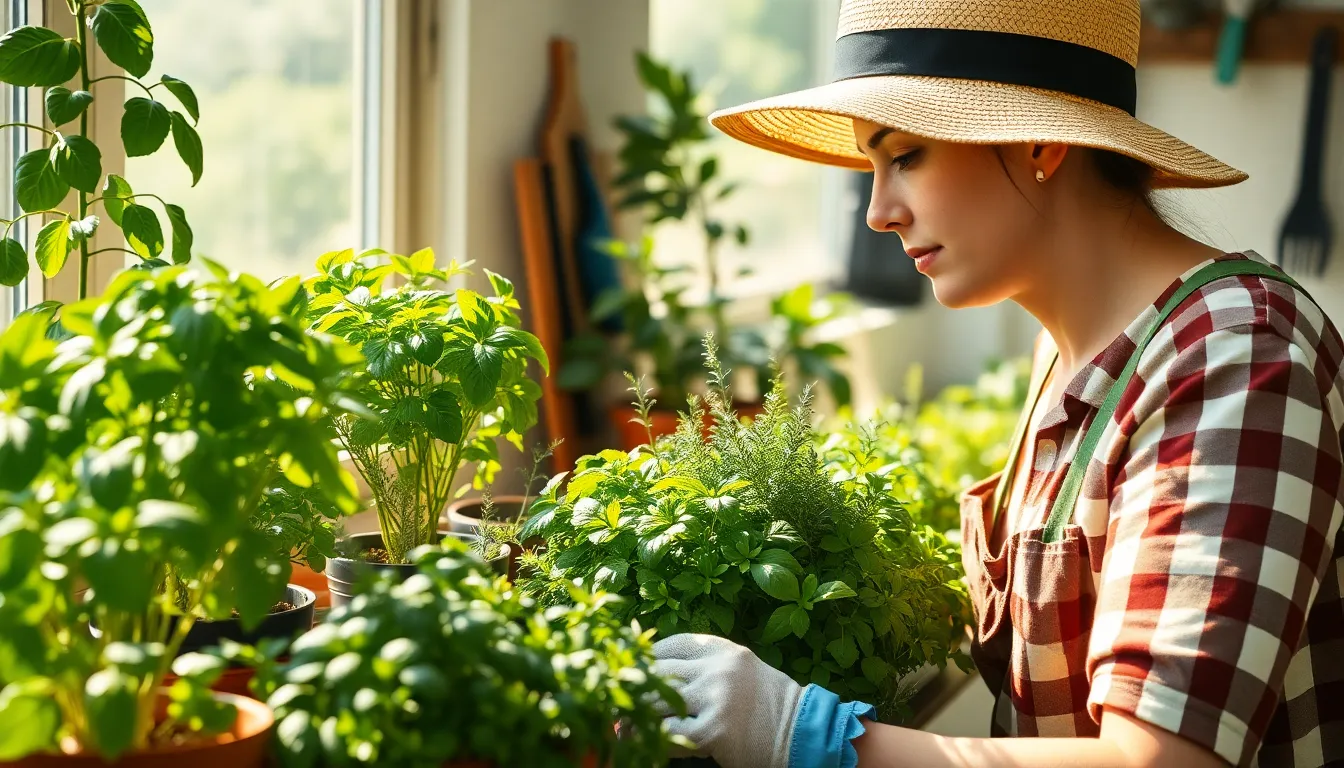
Regular maintenance ensures your indoor herb garden thrives throughout the year. We’ll explore essential techniques for watering, pruning, and preventing common problems that could harm your plants.
Watering Schedules and Techniques
Establish consistent watering every two to three days depending on your herb variety and environmental conditions. Different herbs require varying moisture levels, so we recommend checking soil moisture before each watering session to prevent root rot complications.
Water around the base of each plant rather than spraying leaves directly to prevent mold and mildew development. This technique protects your herbs from fungal diseases that commonly affect indoor gardens.
Try bottom watering by placing pots in water-filled saucers for approximately 15 minutes to prevent overwatering issues. Plants absorb moisture naturally through drainage holes, ensuring roots receive adequate hydration without becoming waterlogged.
Monitor environmental factors like temperature and humidity levels that affect watering frequency. Herbs growing in temperatures between 65°F and 75°F with moderate humidity typically need less frequent watering than those in drier conditions.
Pruning and Harvesting Best Practices
Trim woody herbs like thyme back by one third to maintain proper shape and encourage robust new growth throughout the growing season. Regular pruning prevents herbs from becoming leggy and promotes bushier plant development.
Harvest leafy herbs like basil by cutting stems just above leaf nodes to stimulate continued leaf production. This technique encourages plants to branch out and produce more harvestable foliage over time.
Collect herbs frequently to stimulate ongoing leaf production and prevent premature flowering that reduces flavor quality. Fresh harvesting keeps plants productive and maintains optimal taste profiles for culinary use.
Remove any yellowing or damaged leaves immediately to redirect plant energy toward healthy growth. Clean pruning tools between plants prevent disease transmission throughout your indoor garden collection.
Common Problem Prevention
Check soil moisture levels before watering to avoid overwatering that leads to root rot in container gardens. Stick your finger into soil up to the first knuckle to assess moisture content accurately.
Prevent fungus gnats using bottom watering techniques combined with well draining containers that eliminate standing water. Good drainage systems reduce pest breeding grounds while maintaining proper root health.
Inspect plants regularly for pest infestations and treat problems promptly when discovered to prevent widespread damage. Early detection allows for targeted treatment before pests establish large populations.
Ensure adequate air circulation around plants to prevent humidity related fungal issues that commonly affect indoor growing environments. Position fans nearby or space containers appropriately to promote healthy airflow patterns.
Conclusion
Starting your indoor herb garden journey doesn’t have to be overwhelming. We’ve explored everything from simple windowsill setups to advanced hydroponic systems that fit any space and skill level.
The key is choosing what works best for your lifestyle and kitchen needs. Whether you’re drawn to traditional soil containers or excited about vertical growing walls every approach we’ve covered will bring fresh flavors right to your fingertips.
Your herbs will reward consistent care with abundant harvests that’ll transform your cooking. Remember that even small spaces can yield impressive results when you apply the right techniques and lighting answers.
We encourage you to start small and expand as your confidence grows. Your future self will thank you for taking this step toward fresher meals and a more vibrant living space.
Frequently Asked Questions
What are the best herbs for beginners to grow indoors?
Mint, chives, and parsley are ideal for beginners due to their hardiness and low maintenance needs. These herbs are forgiving, adapt well to indoor conditions, and don’t require special skills or expensive equipment. They’re perfect for those just starting their indoor herb gardening journey and provide quick results.
Where should I place my indoor herb garden for optimal growth?
South-facing windows are ideal for sun-loving herbs like basil and rosemary, while east-facing windows suit more delicate varieties. Ensure consistent temperatures, avoid drafts, and maintain adequate air circulation. Choose locations with at least 6 hours of daily sunlight or supplement with grow lights during winter months.
What containers work best for indoor herb gardens?
Traditional pots made from cedar, steel, or terra cotta are recommended for their moisture regulation and aeration properties. Ensure containers have proper drainage holes and adequate depth for healthy root development. You can also repurpose household items creatively to make unique, personalized herb planters.
How often should I water my indoor herbs?
Water your herbs every two to three days, but always check soil moisture before watering. Use bottom watering techniques to prevent root rot, and ensure containers have proper drainage. Avoid overwatering, which is one of the most common mistakes in indoor herb gardening.
Do I need special lighting for indoor herb gardens?
Most herbs need 6 hours of daily sunlight. During winter months or in low-light areas, use artificial grow lights. LED lights are energy-efficient and provide 12-14 hours of light daily. Smart LED systems with timers can automate lighting schedules for consistent care.
What is hydroponic herb gardening and is it difficult?
Hydroponic gardening is soilless growing that offers faster plant growth, better water efficiency, and reduced pest risks. Simple DIY setups like the Kratky Method or mason jar systems are beginner-friendly and don’t require expensive equipment or special skills to get started.
How do I create a vertical herb garden?
Vertical gardens maximize space using wall-mounted planters, modular systems, or reclaimed wood structures. Choose herbs like basil, mint, chives, oregano, and thyme that adapt well to vertical growing. Ensure proper drainage and consider automated watering systems for easier maintenance.
Can I grow culinary herbs indoors year-round?
Yes, herbs like basil, thyme, oregano, and rosemary thrive indoors year-round with proper care. Maintain consistent temperatures, adequate lighting, and regular pruning to encourage continuous growth. These herbs provide fresh flavors for cooking throughout all seasons.
How do I prevent common problems in indoor herb gardens?
Monitor for pests regularly, ensure adequate air circulation, and avoid overwatering. Prune herbs regularly to encourage bushy growth and prevent diseases. Maintain consistent watering schedules, proper drainage, and appropriate lighting to keep your herbs healthy and productive.
What space do I need for an indoor herb garden?
Indoor herb gardens can fit any space, from compact countertop setups to windowsill arrangements. Use tiered displays, stackable planters, or vertical systems to maximize limited space. Even small apartments can accommodate thriving herb gardens with creative container arrangements and proper planning.

